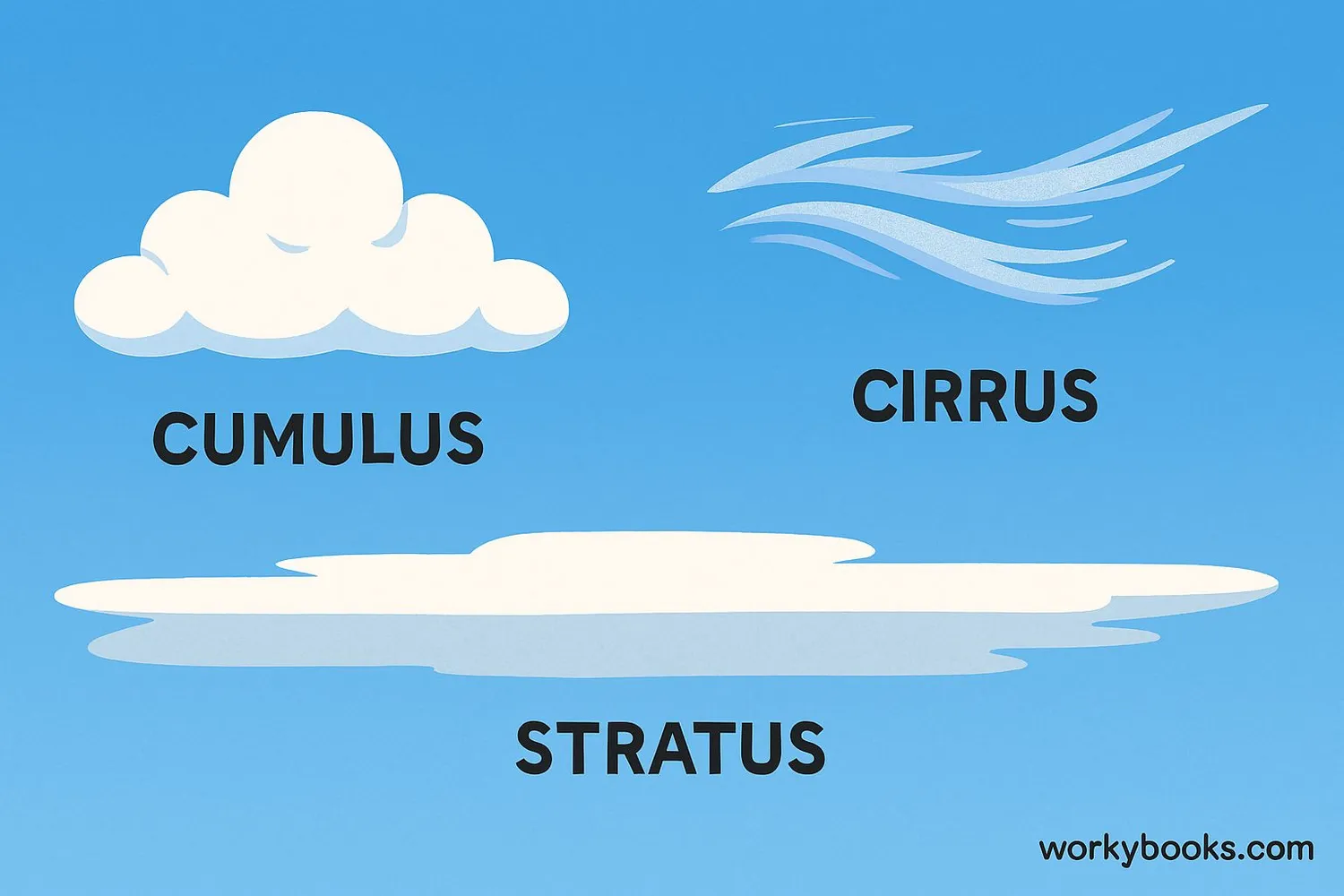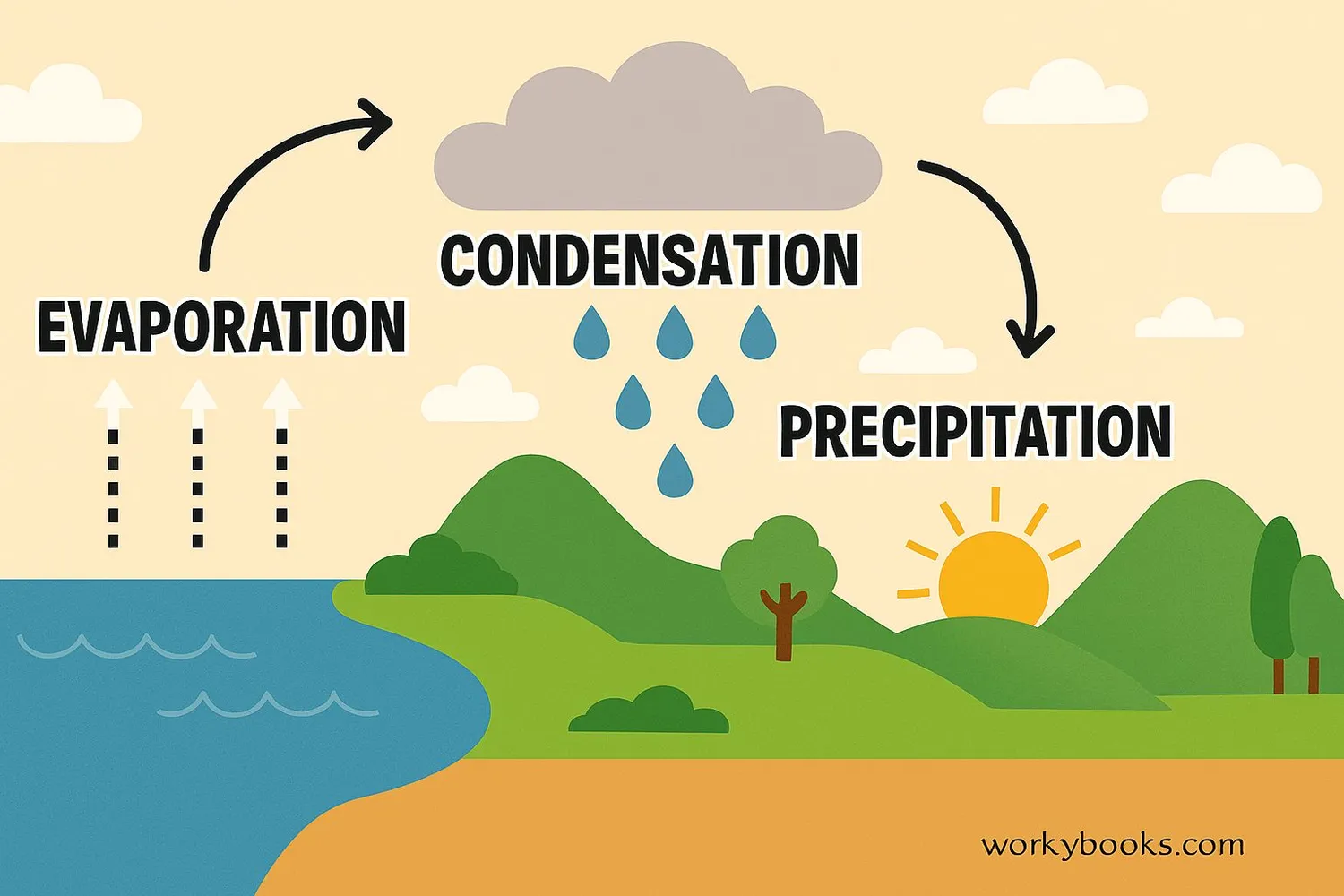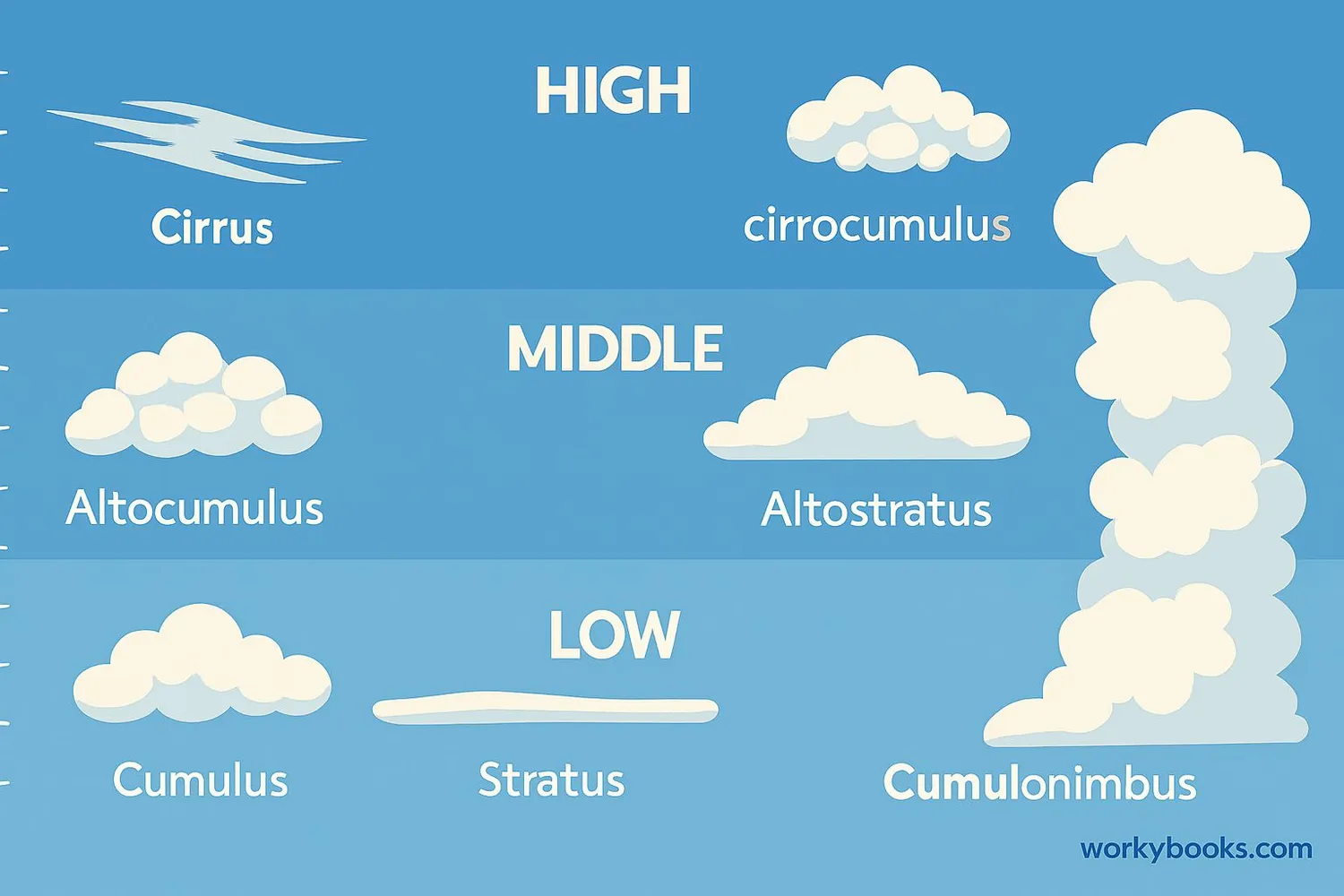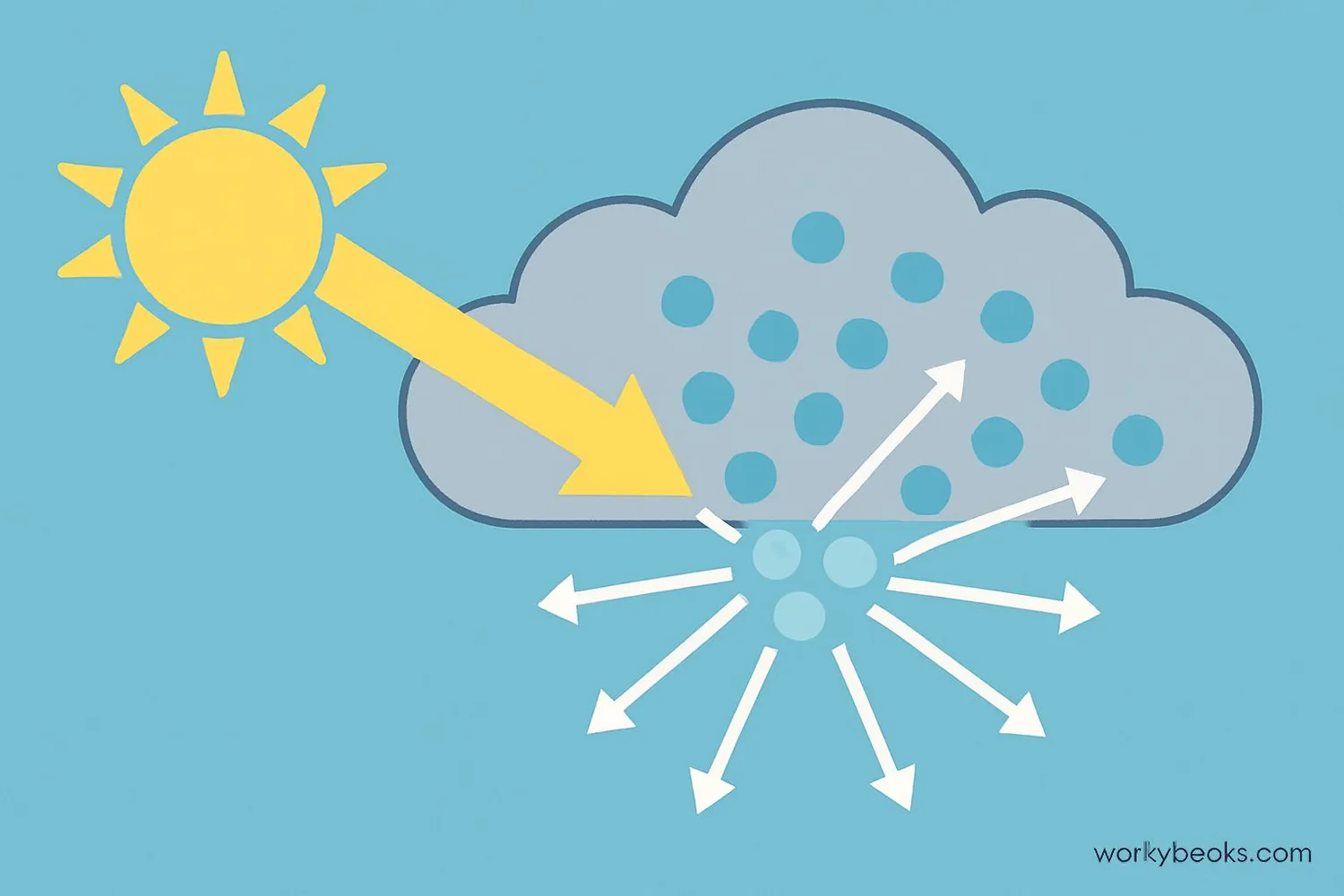Cloud Science - Definition, Examples, Quiz, FAQ, Trivia
Discover how clouds form, their different types, and their role in weather
What Are Clouds?

Clouds are visible collections of tiny water droplets or ice crystals floating in the air. They form when water vapor in the air cools and condenses into liquid water or ice. Clouds come in all shapes and sizes and play a crucial role in Earth's weather system.
Think of clouds as nature's water storage system. They carry water from one place to another, provide shade from the sun, and bring us rain and snow. Without clouds, our planet would be a very different place!
Cloud Fact!
The average cumulus cloud weighs about 1.1 million pounds - that's as heavy as 100 elephants!
How Clouds Form

Clouds form through a fascinating process that involves water changing states. Here's how it works:
Evaporation
Sun heats water, turning it into invisible water vapor
Rising Air
Warm air rises carrying water vapor upward
Cooling
As air rises, it expands and cools down
Condensation
Water vapor condenses into tiny droplets around dust particles
Cloud Formation
Millions of droplets gather to form visible clouds
The height at which condensation occurs is called the "dew point." When air reaches its dew point temperature, clouds begin to form. The type of cloud that forms depends on how high the air rises and how much water vapor is present.
Water Cycle Connection!
Cloud formation is a key part of the water cycle, which moves water between Earth's surface and the atmosphere.
Types of Clouds

Scientists classify clouds into different types based on their shape, height, and whether they bring precipitation. The three main cloud types are:
Cumulus
Puffy, cotton-like clouds with flat bottoms. Usually mean fair weather.
Stratus
Gray, layered clouds that cover the whole sky like a blanket. Often bring drizzle.
Cirrus
Wispy, feathery clouds made of ice crystals. Found at high altitudes.
Cumulonimbus
Towering storm clouds that can reach up to 10 miles high. Bring thunderstorms.
Clouds are also classified by their height:
High clouds (above 20,000 ft): Cirrus, cirrostratus, cirrocumulus
Middle clouds (6,500-20,000 ft): Altostratus, altocumulus
Low clouds (below 6,500 ft): Stratus, stratocumulus, nimbostratus
Clouds with vertical growth: Cumulus, cumulonimbus
Why Are Clouds White?

Clouds appear white because of how sunlight interacts with the water droplets inside them:
Sunlight
Sunlight contains all colors of the rainbow combined
Water Droplets
Tiny water droplets in clouds scatter sunlight
Color Mixing
All colors scatter equally, combining to make white light
When clouds appear gray, it's usually because they are very thick or dense. The top of the cloud blocks sunlight from reaching the bottom, making it look dark. Rain clouds also look gray because they have large water droplets that absorb more light instead of scattering it.
Color Fact!
At sunrise and sunset, clouds can appear pink, orange, or red because sunlight travels through more atmosphere, scattering blue light away.
Cloud Science Quiz
Test your cloud knowledge with this quiz! Answer all 5 questions to see how much you've learned.
Frequently Asked Questions
Here are answers to common questions about clouds:
Cloud Science Trivia
Discover some amazing facts about clouds!
Highest Clouds
Noctilucent clouds are the highest clouds, forming about 50 miles above Earth's surface. They're visible only at twilight and are made of ice crystals.
Cloud Weight
The average cumulus cloud weighs about 1.1 million pounds! But because this weight is spread across billions of tiny droplets, clouds can float.
Thunderstorm Power
A single cumulonimbus cloud can contain enough energy to power the entire United States for 20 minutes! This energy comes from the condensation process.
Clouds on Other Planets
Other planets have clouds too! Venus has thick sulfuric acid clouds, Jupiter has ammonia clouds, and Saturn's moon Titan has methane clouds.





